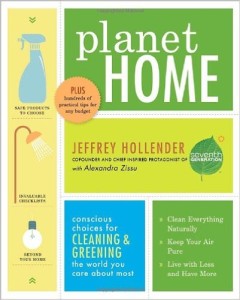Planet Home is a guide to going green, but this book goes a step further and challenges readers to think deeply about how our actions and purchases are part of a much larger planetary system than we may be aware of. This book was written in 2010, but it is just as, if not more, potent now in 2015. Making ‘green’ the new normal goes beyond the material, and must spur a new consciousness of the environmental impact of any once choice; we must be aware of a larger picture where each choice benefits or harms not only our selves, but affects our neighbors, our community, and the environment as well. To make a change it is crucial to see the whole interconnected systems that live just behind everything that we do.
For example, using ethanol rather than gasoline as fuel may seem like a good idea, but look beneath the surface. Ethanol isn’t just energy derived from corn; it’s grown from genetically modified seeds, it requires the use of petroleum-derived sprays, and it drives up the price of corn-which then affects tortilla prices in Mexico. It takes more energy to grow the corn used to make ethanol tan the ethanol itself provides. Another example: eating organic not only benefits our bodies, it is better for farmers, animals, and the land used to grow product. Being an educated and conscious consumer is critical in going green and making a difference.
Planet Home walks you through each room in the house, providing quick tips and easy fixes for a greener home, while explaining what’s hazardous about traditional products that we may not think twice about. Did you know that many cleaning products use artificial fragrances made from synthetic chemicals that often produce air pollutants and potential carcinogens? What about this: nonstick pans use perfliorooctanoic acid, a manmade chemical that does not biodegrade, is likely carcinogenic, and can be found in the blood of most Americans? Also: most foams found in mattresses and furniture contain highly toxic flame-retardants that can cause reproductive abnormalities. Bottom line: there is always more than meets the eye when it comes to materials we use every day. Planet Home’s goal is that the reader will not only make changes for a healthier home, but also start to think critically about where products come from, what’s in them, and the social & environmental implications of their use.
What can be added to this guide that may have not been relevant 5 years ago?
What do you find most helpful about the book?
What are some of your own green tips & fixes?
Please feel free to comment below.

